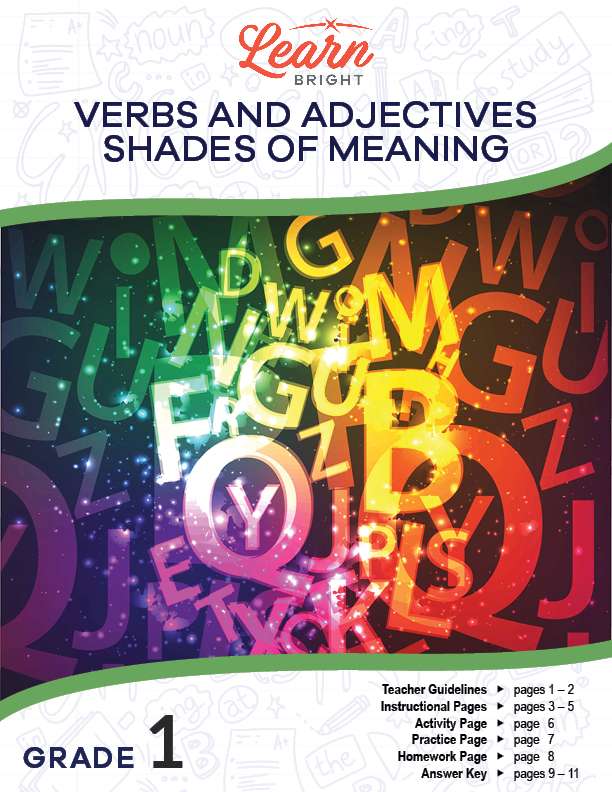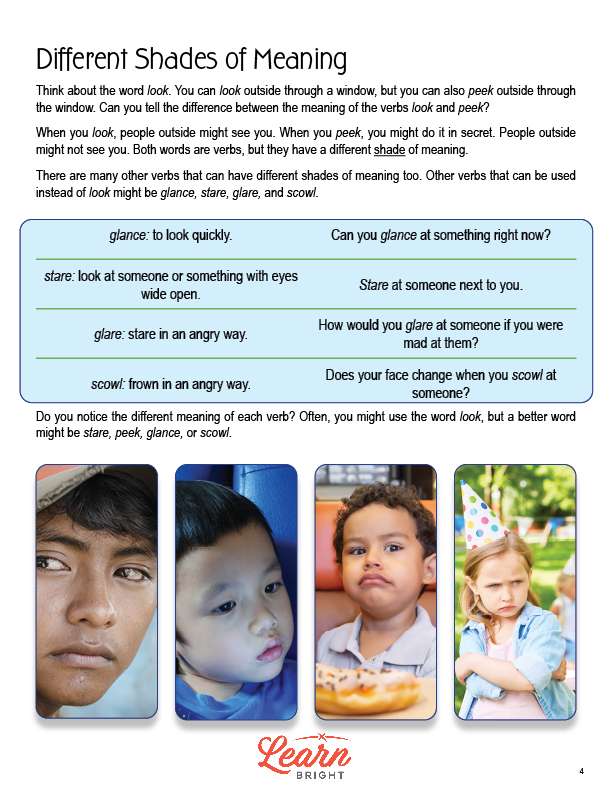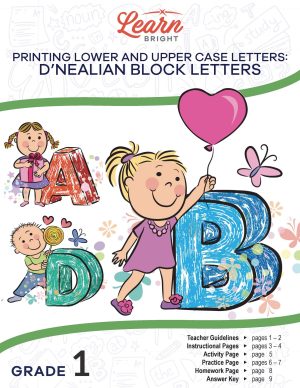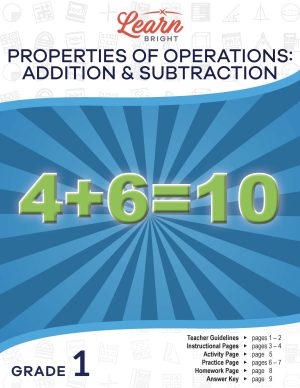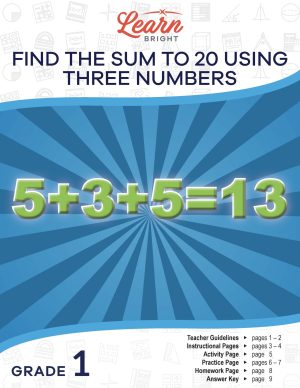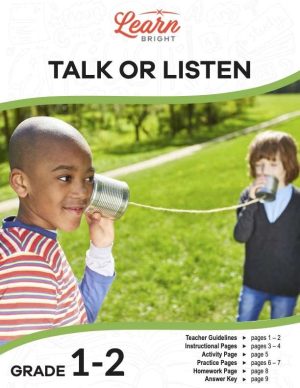Description
What our Verbs and Adjectives Shades of Meaning lesson plan includes
Lesson Objectives and Overview: Verbs and Adjectives Shades of Meaning teaches students how different verbs and adjectives can mean primarily the same thing but have slightly different meanings. At the end of the lesson, students will be able to distinguish shades of meaning among verbs differing in manner and adjectives differing in intensity by defining or choosing them or by acting out the meanings. This lesson is for students in 1st grade.
Classroom Procedure
Every lesson plan provides you with a classroom procedure page that outlines a step-by-step guide to follow. You do not have to follow the guide exactly. The guide helps you organize the lesson and details when to hand out worksheets. It also lists information in the green box that you might find useful. You will find the lesson objectives, state standards, and number of class sessions the lesson should take to complete in this area. In addition, it describes the supplies you will need as well as what and how you need to prepare beforehand. The supplies you will need for this lesson are scissors and the handouts.
Options for Lesson
Included with this lesson is an “Options for Lesson” section that lists a number of suggestions for activities to add to the lesson or substitutions for the ones already in the lesson. One optional adjustment to the activity worksheet is to use more or less words. One additional activity for this lesson is to conduct a “Shades of Meaning Bee” with the class where you read two similar words aloud and have students act out the meaning of each word. You can also have your students use a dictionary and randomly choose a word they may know to act out for the class. Finally, you can use current reading or other subject content and have your students replace some verbs or adjectives with another word.
Teacher Notes
The teacher notes page includes a paragraph with additional guidelines and things to think about as you begin to plan your lesson. This page also includes lines that you can use to add your own notes as you’re preparing for this lesson.
VERBS AND ADJECTIVES SHADES OF MEANING LESSON PLAN CONTENT PAGES
Verbs and Adjectives
The Verbs and Adjectives Shades of Meaning lesson plan includes three content pages. Students likely already know what verbs are (words used to show action). Some examples of verbs include run, walk, and see. They also likely already know what adjectives are (words used to describe or tell about a noun). Some examples include green, big, and small. The lesson then asks student to identify the nouns and adjectives in some example sentences.
Verbs can give information about actions, while adjectives can help describe nouns. When writing or speaking, you should use many different verbs and adjectives that have different meanings. The example sentence describes someone as nice. We could try using other words to describe that person that have different shades of meaning.
We can think of different shades of meaning like the light you might see throughout the day. Sometimes, the sun is bright and other times, it’s dimmer. Just like the light changes, the words we choose to use to change the meaning of something in small, but important, increments.
Different Shades of Meaning
One example of this is the word look. You can look, but you can also peek. These verbs mean similar things, but have slightly different meanings that change the whole sentence. If you look, someone might see you. If you peek, you’re trying not to be seen. These are both verbs, but they have different shades of meaning. We have many different examples of this.
Instead of look, we could also use glance, stare, glare, or scowl. Each word communicates something slightly different. The lesson elaborates on this by providing precise definitions for each word.
Instead of walk, we could use stroll, march, or move. Instead of nice, we could use friendly, pleasant, kind, or thoughtful. Being nice is slightly different than being friendly or thoughtful.
We often use the word big to describe things. However, if you’re trying to describe multiple things at once, you might need different words. If describing a cookie, a dinosaur, and a moon, you might want to use different words. You might call the cookie large, the dinosaur enormous, and the moon massive. These adjectives have different meanings.
When reading or writing, think about your word choice and how you can find a better verb or adjective with a different shade of meaning to make your point more clearly.
VERBS AND ADJECTIVES SHADES OF MEANING LESSON PLAN WORKSHEETS
The Verbs and Adjectives Shades of Meaning lesson plan includes three worksheets: an activity worksheet, a practice worksheet, and a homework assignment. You can refer to the guide on the classroom procedure page to determine when to hand out each worksheet.
ACTING ACTIVITY WORKSHEET
For the activity worksheet, students will cut out each word on the worksheet and will think about how they would act out the meaning of each word. The teacher will then give each student a turn to act out one of the words for the class.
Students can also work in pairs to complete this activity.
MATCHING PRACTICE WORKSHEET
The practice worksheet asks students to draw a line from one word to another that has a different shade of meaning. They will then choose the best word for each of the given sentences.
VERBS AND ADJECTIVES SHADES OF MEANING HOMEWORK ASSIGNMENT
For the homework assignment, students will complete two short exercises. First, they will read a list of words and decide whether they’re verbs or adjectives and write a corresponding word for each that has a different shade of meaning.
Next, they will act out the set of words listed on the worksheet for a parent or other family member. On the line next to the word, the family member will write down whether or not you acted out each verb or adjective with a different shade of meaning.
Worksheet Answer Keys
This lesson plan includes answer keys for the activity worksheet, the practice worksheet, and the homework assignment. If you choose to administer the lesson pages to your students via PDF, you will need to save a new file that omits these pages. Otherwise, you can simply print out the applicable pages and keep these as reference for yourself when grading assignments.

